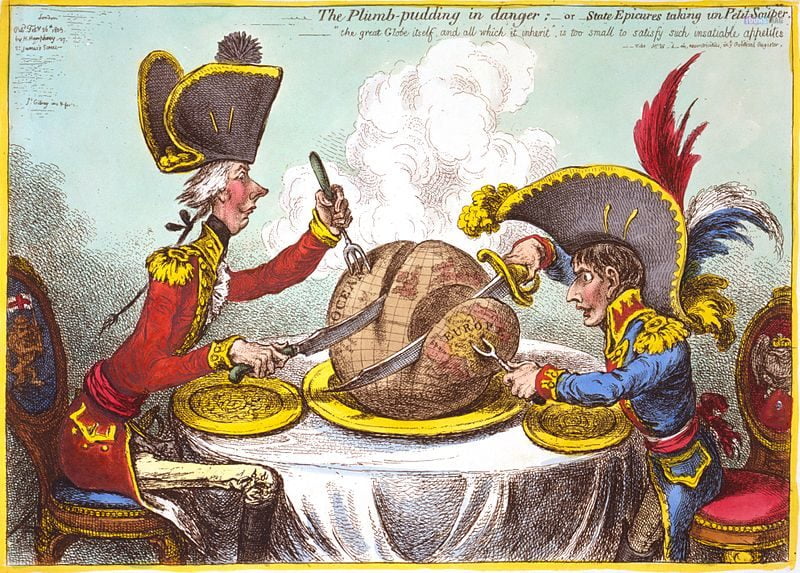The Enduring Relevance of Editorial Cartoons: In an age dominated by memes, reels, artificial intelligence, and fast-scrolling digital content, it would be easy to assume that editorial cartoons—a medium centuries old—are outdated. But that assumption would be deeply mistaken. Far from being relics of the past, editorial cartoons remain one of the most potent, insightful, and accessible forms of political commentary and social critique available to us today.
Editorial cartoons transcend the barriers of time, language, and literacy. With a single panel, cartoonists can spark debate, incite laughter, deliver searing critique, and inspire action. Their blend of humor, art, symbolism, and intellect allows them to distill complex truths into simple yet unforgettable imagery.
In this article, we delve into the reasons why editorial cartoons continue to matter in today’s fast-changing world. We explore their historical evolution, cultural power, artistic significance, social function, and adaptability—unpacking how this enduring art form continues to shape public discourse and democracy in the 21st century and beyond.
The Historical Significance of Editorial Cartoons
Editorial cartoons have been a staple of public communication for over 300 years. Some of the earliest forms of political satire appeared in the form of caricatures and broadsides, often lampooning royalty, clergy, and emerging political leaders.

✍️ From Pen to Power
- In the 18th century, British artist James Gillray and William Hogarth pioneered political satire through illustrated prints, influencing public opinion during times of upheaval.
- Thomas Nast, considered the father of American editorial cartooning, used his art in the 19th century to take on political corruption, slavery, and social inequality. His depictions of Boss Tweed and Tammany Hall were instrumental in bringing down corrupt political machines.
- In Europe, cartoonists like Honoré Daumier used lithography to critique the French monarchy and judicial system, often at great personal risk.
The tradition established by these artists laid the groundwork for editorial cartoons to become an essential feature of newspapers and political commentary.

What Makes Editorial Cartoons Timeless?
🎯 1. The Power of Visual Satire
Editorial cartoons communicate more in a few brush strokes than entire columns of text. In a world flooded with information, their visual immediacy and punch offer a much-needed pause for reflection.
Whether tackling global wars, economic inequality, climate change, or social justice, cartoonists simplify complex issues into a single, powerful image that resonates emotionally.
🧠 2. Universality and Accessibility
Unlike lengthy opinion pieces or academic essays, editorial cartoons are:
- Language-independent (often understandable across cultures)
- Quick to consume (ideal for short attention spans)
- Emotionally impactful (using humor, irony, and pathos)
This accessibility ensures that they can reach broad and diverse audiences, making them particularly effective in public education and advocacy.
🖼️ 3. Artistic and Cultural Commentary
Editorial cartoons are not just journalistic tools; they are works of cultural and artistic value. They capture the aesthetic sensibilities, humor, and concerns of their time, offering future generations a visual archive of societal attitudes and historical moments.

The Role of Editorial Cartoons in Modern Society
Editorial cartoons continue to serve as mirrors, magnifying glasses, and megaphones for society.
🪞 1. Mirror of Society
Cartoons reflect the prevailing public mood, revealing not just events but how people feel about them. They capture social anxieties, anger, humor, and hope, often with unflinching honesty.
🔍 2. Magnifying Injustice
From exposing corruption to satirizing hypocrisy, cartoons act as catalysts for accountability. They can bring attention to issues that mainstream media might avoid or underreport.
Cartoonists are often the first to mock power, the last to be silenced.
📢 3. Megaphone of Dissent
In authoritarian regimes, editorial cartoons can become acts of resistance. Even where freedom of speech is curtailed, satire finds a way to communicate truth through allegory, metaphor, and subtext.
Editorial Cartoons in the Digital Age
The digital revolution has posed both challenges and opportunities for editorial cartoonists.
📉 Challenges
- Decline of print media: Many newspapers have cut full-time cartoonist positions due to budget constraints.
- Censorship: Both governments and social media algorithms sometimes suppress cartoons deemed “offensive” or “politically incorrect.”
- Misinformation: Satirical cartoons are occasionally mistaken for fake news or misused out of context.
📈 Opportunities
- Wider reach through social media: Cartoons now go viral, reaching millions instantly.
- Platforms like Toons Mag and Cartoonist Network allow global collaboration, showcasing work from artists in different countries and cultures.
- New formats: Animated cartoons, digital comics, and interactive illustrations expand storytelling possibilities.
The digital space enables cartoonists to bypass editorial gatekeepers, connect directly with audiences, and experiment with multimedia tools.

Editorial Cartoons as Tools for Education and Activism
🎓 Political Literacy
Cartoons are increasingly used in classrooms to teach students about:
- Political systems
- Human rights
- Environmental issues
- Media literacy
They encourage critical thinking, interpretation, and debate, making them powerful pedagogical tools.
✊ Social Movements
Editorial cartoons are often the visual backbone of movements for change:
- Black Lives Matter: Cartoonists worldwide depicted the urgency of racial justice.
- Climate action: Satirical illustrations highlight the gap between political rhetoric and environmental inaction.
- Women’s rights and LGBTQ+ activism: Cartoons challenge patriarchy and heteronormativity with wit and bravery.
Cartoons become rallying cries, protest signs, and digital banners—art that agitates and inspires.

Global Perspectives: Editorial Cartoons Around the World
Cartooning is a universal language with local dialects. Around the world, editorial cartoonists reflect the struggles and triumphs of their societies.
🌍 Africa
Cartoonists in Kenya, Nigeria, South Africa, and Sudan tackle corruption, tribalism, foreign interference, and economic inequality. Despite threats, they remain vital to democratic discourse.
🌏 Asia
In India, editorial cartoons are part of a rich tradition of satire, though rising nationalism has made criticism more dangerous. In China and Myanmar, cartoonists operate under extreme censorship, often in exile or anonymity.
🌎 Latin America
Artists from Brazil, Mexico, and Argentina lampoon political instability, inequality, and state violence. Cartooning is often infused with surrealism and dark humor—tools of survival in turbulent societies.
🇪🇺 Europe
In countries like France, Germany, and the UK, cartoonists navigate the balance between free expression and cultural sensitivity, especially regarding religion, migration, and identity.

The Ethical Challenges of Editorial Cartooning
With great power comes great responsibility. The pen that skewers injustice can also reinforce stereotypes or cause harm if wielded carelessly.
Cartoonists must walk a tightrope:
- Satire must punch up, not down.
- Caricature should target power and behavior, not identity or biology.
- Symbols must be used consciously, with awareness of cultural and historical baggage.
🤔 Free Speech vs. Hate Speech
Editorial cartoons often test the boundaries of expression. Cartoonists must ask:
- Am I critiquing the powerful or mocking the oppressed?
- Does this cartoon promote understanding or division?
- Can I provoke thought without causing harm?
Responsible cartooning embraces both courage and conscience.

The Resilience of the Cartoonist
Despite threats, censorship, and uncertainty, editorial cartoonists persist.
- In exile, they continue to publish through international platforms.
- Under dictatorships, they use coded imagery and allegory.
- Online, they build communities of resistance and support.
Cartoonists are chroniclers of conscience, drawing not just what they see but what others fear to say.
Case Studies: Cartoons That Changed the Conversation
📰 Charlie Hebdo (France)
The 2015 terrorist attack on the satirical magazine sparked global debate about the limits of free speech, religious sensitivity, and the risks cartoonists face.
While divisive, the tragedy underscored how deeply cartoons can impact culture and geopolitics.
🗳️ Occupy Wall Street (USA)
Cartoons of fat-cat bankers, broken systems, and rigged economies helped crystallize public frustration and popularized the “1% vs. 99%” narrative.
🌱 Greta Thunberg and Climate Satire
Cartoons amplifying Greta Thunberg’s voice—both supportive and critical—played a key role in framing climate discourse across generations.

Editorial Cartoons and the Future
As we look ahead, editorial cartoons will continue to evolve in form and function.
💡 Innovation
- AI-assisted art tools will aid but not replace human satire.
- AR/VR cartoons may offer immersive political experiences.
- Data-driven satire could combine journalism and illustration for deeper storytelling.
🌐 Integration
- Cartoons will be embedded in interactive news stories, podcasts, and social media campaigns.
- Cross-platform storytelling will create cartoon-report hybrids.
📣 Relevance
Editorial cartoons will remain relevant as long as:
- Power exists
- People seek truth
- Laughter remains a form of protest
In every society, at every moment of crisis or celebration, someone will pick up a pen and draw—because that is what we do when we want to see clearly and speak freely
The Enduring Relevance of Editorial Cartoons: The Timelessness of a Bold Line
Editorial cartoons are more than ink and paper. They are society’s conscience and critic, our jesters and judges, our artists and activists. As media changes, as politics grow more complex, and as societies confront new challenges, cartoonists adapt—but their mission remains unchanged.
To reflect.
To resist.
To reveal.
To remind us who we are—and who we could be.
The enduring relevance of editorial cartoons lies not just in their history, but in their resilience, creativity, and courage. They will continue to matter—not because they are old, but because they are always new.
In a world spinning faster every day, the simple, still line of a cartoon remains a timeless compass.
This post was created with our nice and easy submission form. Create your post!



